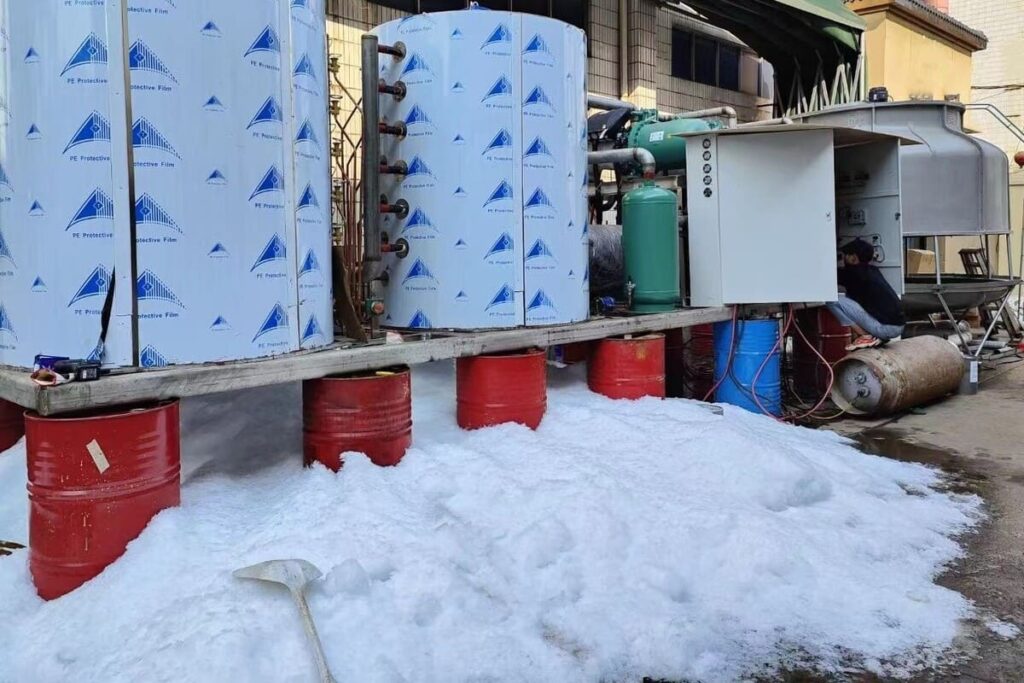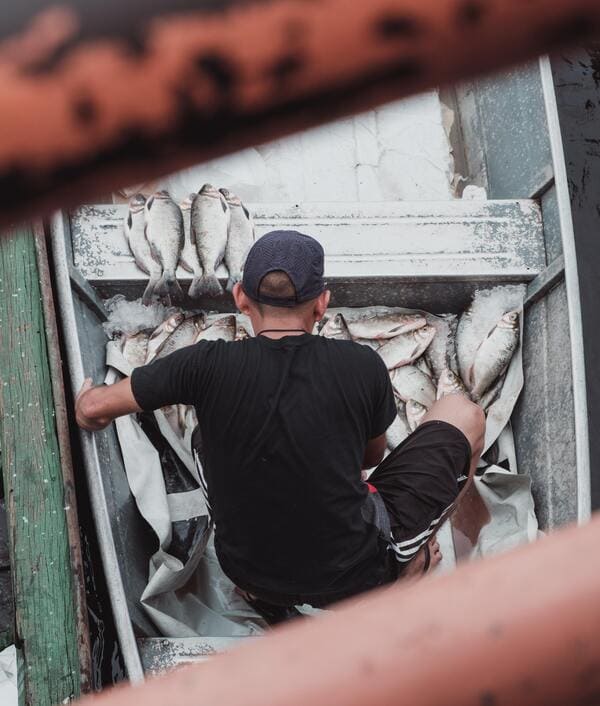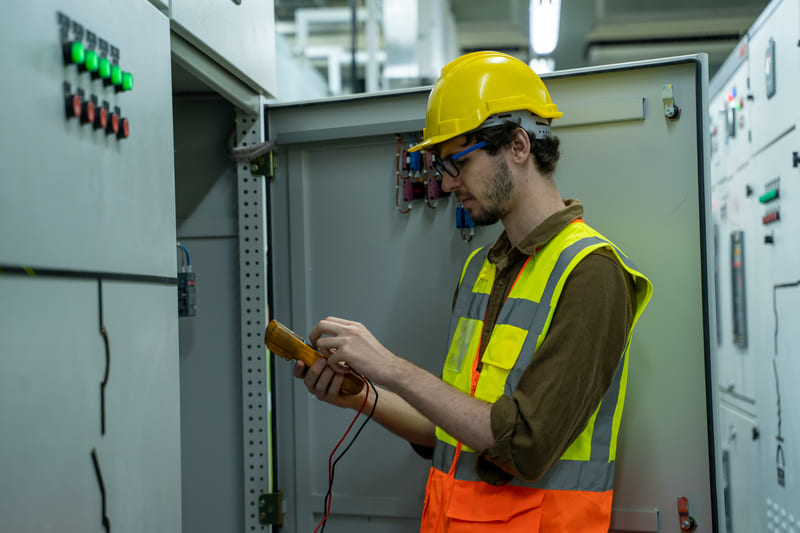Flake ice machines are vital for businesses that need a reliable and steady supply of ice. A flake ice maker produces high-quality ice perfect for various applications. Such applications include food and beverage service, medical use, and industrial processes. Are you in the market for a flake ice maker but need help determining what capacity to get?
Choosing the suitable capacity ensures you have enough ice for your business needs. It eliminates the risk of overspending on a machine that’s too large. It’s not a matter of picking the biggest one available. It would be best if you considered several factors, such as daily ice demand, peak usage times, and space.
But, choosing the right flake ice machine capacity can be challenging. This is especially true if you are unfamiliar with the factors affecting capacity. This blog post explains how to choose the right flake ice machine capacity for your business.
How to Choose the Right Flake Ice Machine Capacity- Factors to Consider
You must consider these factors when choosing the right capacity for a flake ice machine. It might seem like a lot to take in, but if you break it down, it’s pretty simple. The factors include:
Type of Business
The type of business matters when choosing the right flake ice maker capacity. This is because different businesses have varying demands for flaked ice. As a result, it affects the capacity of the machine you need.
For example, if you own a restaurant or supermarket, you’ll likely need a flake ice machine with a larger capacity. This is because you’ll need to produce ice for food processing and storage all day and night. Owning a small agricultural shop might not need as much ice, and a smaller machine is enough.
If you have a fish market, you’ll need a commercial ice maker with a larger capacity. This is because you’ll need to keep your products fresh and cool. If you’re operating an ice cream shop, you’ll only need a smaller machine for your display case.
Amount of Ice Needed

By calculating how much daily ice, you ensure your ice machine meets your demands.
After all, there’s nothing worse than running out of ice in the middle of a busy shift. This leaves your customers disappointed and your staff scrambling to find a solution. Choosing a flake ice maker with the right capacity can avoid this problem. It will keep your business running well.
You can calculate this based on several factors. These include the number of customers, the operation size, and specific applications. A business requiring a high volume of ice will need a larger machine.
So take a few minutes to calculate your daily ice needs. Then, use that information to select the perfect flake ice machine for your business. Trust me; you’ll thank yourself in the long run!
Peak Demand Periods and Duty Cycle
| Daily Output | Power Supply | Cooling Mode |
| 1 ton | 3P/380V/50Hz | Air/Water Cooling |
| 2 tons | 3P/380V/50Hz | Air/Water Cooling |
| 3 tons | 3P/380V/50Hz | Air/Water Cooling |
| 4 tons | 3P/380V/50Hz | Air/Water Cooling |
| 5 tons | 3P/380V/50Hz | Air/Water Cooling |
| 8 tons | 3P/380V/50Hz | Air/Water Cooling |
| 10 tons | 3P/380V/50Hz | Water Cooling |
| 20 tons | 3P/380V/50Hz | Water Cooling |
Peak demand is the highest level of ice production your business needs during a given time. This could be during a busy lunch rush or a special event. You’ll want to ensure the ice machine can produce enough to meet this peak demand. You should not overwork the machine.
It’s crucial to determine the busiest times of the day or year when you need to produce more ice than usual. This helps you pick a maker that can handle the greatest demand without breaking down or running out of ice.
The duty cycle is how long an ice maker can operate without a break. You risk if you choose a machine with a lower duty cycle than your peak demand requires. Choosing a machine with a duty cycle that matches or exceeds your needs is also vital. This ensures your ice machine can handle the demands of your business and operate well for years to come.
Remember, having enough ice on hand during peak demand can make or break your business. Customers will only be happy if they get they find fresh food. Less capacity can lead to lost sales and revenue. So, take the time to analyze your business needs and choose a machine that can handle your busiest times.
Ice Storage Capacity

This refers to the amount of ice the machine can store at any time. Understanding your ice needs and choosing the appropriate ice storage capacity is vital. You can always have enough ice to meet your customers’ needs. Additionally, it can help you save money on energy costs and prevent machine failures.
A larger storage capacity benefits businesses that need a steady supply of ice over a long time. A smaller storage capacity can be more suitable for companies requiring ice.
Remember, it’s always better to choose a larger ice storage capacity. This is because having more ice than you think is always better. It will allow you to handle unexpected surges in demand and future business growth.
Environmental Factors
Factors such as incoming water temperature and ambient air temperatures can impact operations. Also, humidity and radiation are common factors that affect ice production. They can impact the ice-making process, the quality of the ice, and the machine’s lifespan. So, when selecting a flake ice maker, ensure it can handle specific conditions.
Additionally, you need to be mindful of the environmental impact of ice-making operations. Some commercial ice machines are more energy-efficient and eco-safe than others. Consider a model that aligns with our sustainability goals and values.

Energy Efficiency
Energy efficiency is a vital factor to consider when choosing a flake ice maker. An inefficient machine can cost you a lot of money in the long run through high energy bills.
So, how do you know if a flake ice machine is energy efficient? For energy efficiency, look for models certified by reputable organizations. These organizations may include Energy Star or the Canadian Standards Association (CSA). These certifications are for products that meet specific energy consumption criteria. So you can trust that they will save you money on your energy bills.
Another thing to consider is the machine’s compressor. The compressor is the heart of the machine and keeps the ice cold. Look for models with high-quality compressors designed to be energy efficient.
Finally, consider the flake ice machine size. A larger machine can produce more ice but also use more energy. You’ll want to find a machine that is the right size for your business’s needs. This is so you’re not wasting energy on an oversized machine.
Understanding Flake Ice Maker Capacity Ratings
Flake ice machines can be confusing, but understanding their capacity ratings is vital. This helps ensure you get the right machine for your needs. Here’s what you need to know:
What is Capacity Rating?
Capacity rating refers to the amount of ice a flake ice machine can produce within a certain period. The period is usually 24 hours.

The capacity rating is like the engine size of a car. Like how a bigger engine gives more power, a high-capacity rating machine gives more ice. If you have a business that needs a lot of ice daily, you’ll want a flake ice machine with a higher capacity rating.
Types of Capacity Rating
There are two types of capacity ratings: storage capacity and production capacity.
Production Capacity
Production capacity refers to the amount of ice the machine can produce in a given period. This is usually measured in pounds per 24 hours. It is the most critical factor when choosing a flake ice maker capacity. Your businesses might need a high volume of ice. This means you will need a machine with a higher production capacity to meet your needs.
Storage Capacity
Storage capacity refers to the amount of ice the machine can store at any time. This is usually measured in pounds. Depending on the machine’s capacity, it ranges from a few hundred to some thousand pounds.
Businesses that need a steady supply of ice need a machine with a larger storage capacity. This is to ensure a reliable supply of ice.
How Capacity Affects Actual Ice Production
The capacity rating affects how much ice you can have at any moment.
When selecting a flake ice machine, choosing a machine with a capacity that meets your needs is important. If the capacity is too small for your needs, the machine will not be able to keep up with demand, and you may run out of ice during peak usage times.
But, if the capacity is too large, the machine will work harder than necessary, resulting in higher energy costs and more frequent maintenance.
If a flake ice machine operates at or near its capacity, it will produce the maximum amount of ice possible. However, if the machine is operating at less than full capacity, it will not produce as much ice as it can.
Calculating the Right Capacity for Your Business
To determine the right capacity for your business, you must calculate the amount of ice you need. You should base your decision on the factors we have discussed.
Here is how to calculate ice capacity in various industries.
Food and Beverage Industry

In the food and beverage industry, the right ice capacity will depend on the product type and volume. There are six simple steps to determine your business’s commercial ice requirements.
Step 1: Determine the type and amount of ice needed for the business based on the customer’s needs.
Step 2: Use a formula that calculates the needed ice and the amount of ice a machine can produce in a given time.
Step 3: Calculate the hourly ice capacity, the amount of ice a machine can produce within an hour. (Production ÷ 24 hours = Hourly Capacity)
Step 4: Calculate the recovery time, which is the time needed to fill up the storage bin connected to the ice machine. (Storage capacity ÷ Hourly capacity = Recovery Time)
Step 5: Calculate the net yield, the amount of ice produced on an average day. (Run time × Hourly capacity = Net Yield)
Step 6: Calculate the maximum 24-hour ice yield, the maximum amount of ice produced in 24 hours. (Batch weight × (cycle time minutes ÷ 1440) = Maximum 24 hour yield)
Using this formula, a business can maximize the machine’s efficiency and reduce waste, resulting in cost savings and increased profits. When choosing the right ice capacity for the food industry, there are things to consider. These include the business size, the number of customers, and the ice volume needed.
Healthcare Industry
Ice is often used for patient care and medical procedures in the healthcare industry. There is no one-size-fits-all formula for calculating the right flake ice machine capacity for the healthcare industry.
The specific needs and requirements will vary depending on the size and type of facility and the intended use of the ice. Hospitals and healthcare clinics tend to require the most ice per person. You can calculate your ice requirements by multiplying the amount of ice required per patient per day (10 lbs.) by the number of beds on your floor.
It’s important to note that these are general guidelines, and specific requirements for a healthcare facility may vary depending on factors such as the number of patients, the size of the facility, and the intended use of the ice.
It may be helpful to consult with a professional or the flake ice machine manufacturer to determine the most appropriate capacity for your specific needs.

Fishing Industry
In the fishing industry, ice keeps fish fresh during transport and storage. The right ice capacity will depend on the fishing operation’s size and the fish volume.
To calculate the required ice capacity, the following formula can be used:
Ice capacity = Catch volume x (Duration of storage + Transportation time) + Ice loss
For example, if a fishing boat catches 10,000 pounds of fish that need to be stored for three days before transportation, and the transportation time is 1 day with an estimated ice loss of 10%, the required ice capacity would be:
Ice capacity = 10,000 lbs x (3 days + 1 day) + (10% x 10,000 lbs)
Ice capacity = 40,000 lbs + 1,000 lbs
Ice capacity = 41,000 lbs
Therefore, the fishing boat would need an ice capacity of at least 41,000 pounds to preserve the catch during storage and transportation.
There are some factors to consider when choosing a suitable ice capacity for fishing. These include the size of the fishing operation, the type of fish, and the distance to shore.

Industrial Applications
In industrial applications, ice is often used for cooling processes and refrigeration. The right ice capacity will depend on the specific needs of the production process. It will also depend on the volume of products you’re producing.
For example, if the daily ice need is 2500 pounds and the peak usage need is 4000 pounds, a flake ice machine with a capacity of at least 5000 pounds per day would be necessary to meet demand.
You should consider several factors when choosing ice capacity for industrial applications. These factors include the production process, the business’s size, and temperature requirements.
Maintenance and Upkeep of Flake Ice Makers
Once you have chosen the right flake ice machine capacity, you must maintain the machine. This is to ensure optimal performance and longevity. Trust me, taking care of your ice machines will save you a lot of headaches and money in the long run. Here are some maintenance tips for many ice machines to keep in mind:
Regular Cleaning
First, ensure you’re following the manufacturer’s instructions for cleaning and maintenance. Clean your commercial ice machine to remove any buildup or debris. These impurities can impact the machine’s performance.
This means poor ice quality and potential breakdowns. This can include cleaning the evaporator, condenser, and ice bin. These tasks are necessary to avoid a buildup of bacteria or minerals.
One of the most important things you can do for your ice machine is to keep it in a clean, dry, and well-ventilated area. Moisture and heat can cause the machine to work harder, increasing wear and tear. Additionally, if you expose the machine to debris, it can clog the condenser. As a result, this can affect its performance, whether air-cooled units or water-cooled.
Investing in a water treatment system to prevent mineral buildup in the machine is also a good idea. Mineral buildup can damage the evaporator and cause the machine to be incompetent.
Regular Inspection
Make sure to conduct regular inspections of your ice makers. Inspect your machine to ensure that all components are functioning well. This means checking the machine’s components, such as the compressor, evaporator, and condenser. Look for any signs of wear and tear or damage, and replace any worn or damaged parts immediately.
Replace Worn or Damaged Parts
If you notice any worn or damaged parts, replace them immediately. This prevents further damage to the machine. These include replacing the thickness control sensor, water inlet valve, or ice scoop.
This will help to ensure that your ice makers are working well. It can also help prevent more severe issues from occurring.
Troubleshooting Common Issues
If you have issues with your flake ice makers, there are several common problems. Here are some troubleshooting tips to keep in mind:
- Machine not producing enough ice: Check the water and refrigerant levels. Ensure the machine is set to the correct temperature.
- A machine producing too much ice: Check the ice thickness control sensor. Ensure that the machine is set to the correct temperature.
- Odorous or discolored ice: Clean the evaporator and storage bin to remove any debris.
Maintenance and Operating Costs

Let’s talk about maintenance and operating costs on flake ice machines. It’s important to remember that buying a machine is not the end of the story. It would help if you also considered the cost of operating and maintaining it.
When it comes to maintenance, follow the manufacturer’s guidelines for cleaning and upkeep. This will ensure that your machine runs well and doesn’t break down, which can be costly. It’s also a good idea to schedule regular maintenance checkups to catch any issues early on.
Operating costs are also essential to consider. Look for energy-efficient machines that use less water, as this will save you money in the long run. Additionally, consider the cost of water and electricity in your area.
Another thing to consider is warranties and service contracts. Choose a machine with a good warranty. Consider purchasing a service contract for extra peace of mind. This can save you money on repairs and give you access to expert help if needed.
Maintenance and operating costs are essential when choosing flake ice machines. By doing so, you can ensure that you’re getting a quality machine. You also ensure you’re keeping costs down and maximizing your investment.
Conclusion
Choosing a suitable flake ice maker capacity is essential for a reliable supply of ice. You can decide on the machine’s capacity by considering the above factors.
Once you have a machine, keep it well-maintained for optimal performance and longevity. By following these tips, you can ensure that your flake ice machine meets the needs of your business. You can also get a machine with a reliable and consistent supply of ice for your operations.
Choosing the right flake ice machine capacity balances your current and future needs. Take your time, research, and ensure you’re getting the best machine for your business!


